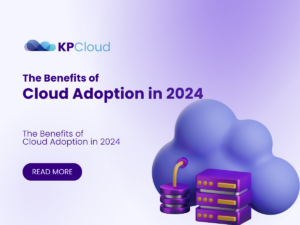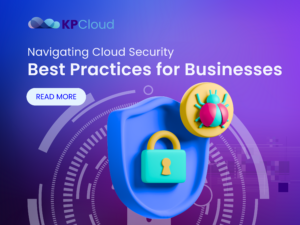Cloud Computing Vendor Lock-in: Navigating the Complex Landscape
Table of Contents
- Introduction
- Understanding Cloud Computing Vendor Lock-in
- The Implications of Vendor Lock-in
- Case Study: A Tale of Unexpected Lock-in
- Strategies to Mitigate Vendor Lock-in
- Strategies to Avoid Vendor Lock-in
- Frequently Asked Questions
- Conclusion
Introduction
As the digital world continues to expand, the adoption of cloud computing has become an essential part of businesses worldwide. It provides scalability, flexibility, and cost-effectiveness that traditional computing cannot match. However, as with all technologies, it comes with its own set of challenges. One of the most significant issues faced by businesses today is the phenomenon known as “Cloud Computing Vendor Lock-in.”
Understanding Vendor Lock in Cloud Computing
Cloud computing vendor lock-in refers to a situation where a customer is dependent on a single cloud provider for their services and cannot easily switch to another vendor without significant cost, time, and technical effort. This dependency arises from the proprietary technologies, tools, and services unique to each cloud provider.
here are a few examples of vendor lock-in cloud computing scenarios in cloud computing:
Proprietary Services and Tools: A business might decide to use Amazon AWS’s Lambda for serverless computing and DynamoDB for NoSQL database services. These are proprietary services, and if the company ever decides to move to another provider, such as Google Cloud Platform (GCP) or Microsoft Azure, they’ll find that there are no direct equivalents of these services. They’d have to rewrite their applications to work with the new provider’s services, which can be time-consuming and expensive. This is a typical example of a technical lock-in.
Data Migration Challenges: Let’s say a company has been using Microsoft Azure’s Cosmos DB for storing their data. If they decide to switch to another provider, they’ll find that there might not be a direct 1:1 equivalent service in the new platform. Migrating the data stored in Cosmos DB into a new format compatible with the new provider can be a complex, resource-intensive process. This is an example of data lock-in.
Contractual Agreements: A business might enter into a multi-year agreement with a cloud provider like Google Cloud Platform to take advantage of discounted pricing. However, if they find midway through the contract they’d like to switch to a different provider due to some changes in their business needs, they might be faced with significant early termination fees. This is an example of a contractual lock-in.
As a cloud computing research student, I’ve seen how this situation can remarkably influence businesses’ strategic decisions and operational processes. But how exactly does vendor lock-in occur?
The lock-in usually takes place in three forms:
- Technical lock-in: This occurs when a business fully integrates its systems with a specific cloud platform’s tools and services, making it hard to transition to a different platform.
- Contractual lock-in: Here, the business is bound by a contractual agreement with the cloud provider, which can include penalties for early termination.
- Data lock-in: This happens when a business stores its data in the cloud service provider’s specific format, making it difficult and time-consuming to migrate data to another platform.
The Implications of cloud computing Vendor Lock in
Vendor lock-in has both positive and negative implications. On the one hand, relying on a single vendor can lead to enhanced integration and support, as well as cost savings from volume discounts.
However, on the other hand, vendor lock-in can lead to several issues:
- Reduced bargaining power: Being tied to a single vendor can result in reduced negotiation power when it comes to pricing, terms, and conditions.
- Limited innovation and flexibility: Dependence on a single provider can restrict access to innovative solutions and services provided by other vendors.
- Risk of service disruption: Any downtime or service issues from the vendor could significantly impact operations.
Case Study: A Tale of Unexpected Lock-in
Consider the real-world example of a large e-commerce company, let’s call it “EcomGlobal”. EcomGlobal decided to move its operations to the cloud for better scalability and efficiency. They chose a leading cloud provider and began transferring their systems and data.
Over time, they realized that shifting to another vendor would mean significant time, effort, and financial investment due to the high degree of integration with their current provider’s specific technologies. They found themselves in a vendor lock-in situation.
This lock-in limited their flexibility and left them vulnerable to price increases and service changes. EcomGlobal’s case is a classic example of how vendor lock-in can restrict a company’s ability to adapt to changing business needs and market dynamics.
Strategies to Mitigate Vendor Lock-in
So, how can we avoid or mitigate the impact of cloud computing vendor lock-in? Below are some strategies that can help:
- Diversify your vendors: Using multiple cloud providers for different services can prevent complete dependence on one vendor.
- Standardize your operations: Adopting standard protocols, interfaces, and formats can facilitate easier migration between platforms.
- Plan your exit strategy: Always consider the possibility of needing to switch vendors. Understand the terms and conditions of your agreement, including data portability, exit costs, and support during migration.
There are several cloud service providers that have made efforts to reduce the chance of vendor lock-in by adhering to open standards, offering flexible contracts, or providing tools to facilitate data and service migration. These include:
- Amazon Web Services (AWS): AWS provides a variety of services based on open standards. They also offer the AWS Migration Service, which simplifies the process of migrating existing workloads to AWS.
- Google Cloud Platform (GCP): Google has a strong commitment to open source and open standards. They provide tools like the Google Cloud Data Transfer Service and BigQuery Data Transfer Service to help businesses move data in and out of Google Cloud.
- Microsoft Azure: Azure provides a range of services based on open standards. They also offer Azure Site Recovery, which simplifies the process of migrating virtual machines to Azure.
- IBM Cloud: IBM offers a variety of open standards-based services and platforms, including Red Hat OpenShift for container orchestration, which can help reduce vendor lock-in.
- Oracle Cloud: Oracle provides tools like Oracle Cloud Lift Services and Oracle Soar to help businesses migrate to Oracle Cloud.
- Alibaba Cloud: Alibaba Cloud offers a wide range of open-source and standards-based services. Moreover, it also provides flexible migration services that support different types of data sources.
Remember, while these providers offer tools and services to reduce vendor lock-in, it’s still essential for businesses to plan their cloud strategy carefully. This includes considering the use of multi-cloud strategies, adopting open standards, and ensuring data portability.
Strategies to Avoid Vendor Lock-in Cloud Computing
There are several strategies that businesses can employ to avoid vendor lock-in. These include:
- Using Open Standards: Open standards allow for greater compatibility and interoperability between different vendors’ technologies, making it easier for businesses to switch vendors.
- Multi-Cloud Strategy: Using multiple cloud service providers can help businesses avoid becoming overly dependent on a single vendor.
- Negotiating Contracts: Businesses should carefully negotiate contracts with vendors to ensure they have the flexibility to switch vendors if necessary.
<a name=”case-study”></a>
Frequently Asked Questions
- What is cloud computing vendor lock-in?
Cloud computing vendor lock-in is a situation in which a business is heavily dependent on a single cloud service provider and cannot easily switch to another vendor without significant cost, time, and technical effort. - How does vendor lock-in occur?
Vendor lock-in usually occurs in three forms: technical lock-in, contractual lock-in, and data lock-in. - What are the implications of vendor lock-in cloud computing?
Vendor lock-in can lead to reduced bargaining power, limited innovation and flexibility, and the risk of service disruption. - How can businesses mitigate the impact of vendor lock-in cloud computing?
Businesses can diversify vendors, standardize operations, and plan an exit strategy to mitigate vendor lock-in.
Conclusion
While cloud computing offers numerous benefits, vendor lock-in is a critical challenge that businesses must address. Understanding the implications of vendor lock-in and implementing strategies to mitigate its impact can help businesses maintain flexibility and control over their cloud computing journey.
The world of cloud computing is diverse, and the right vendor can make all the difference. So, tread carefully, plan wisely, and remember, the cloud is as vast as the sky; there’s always room to move and grow.


